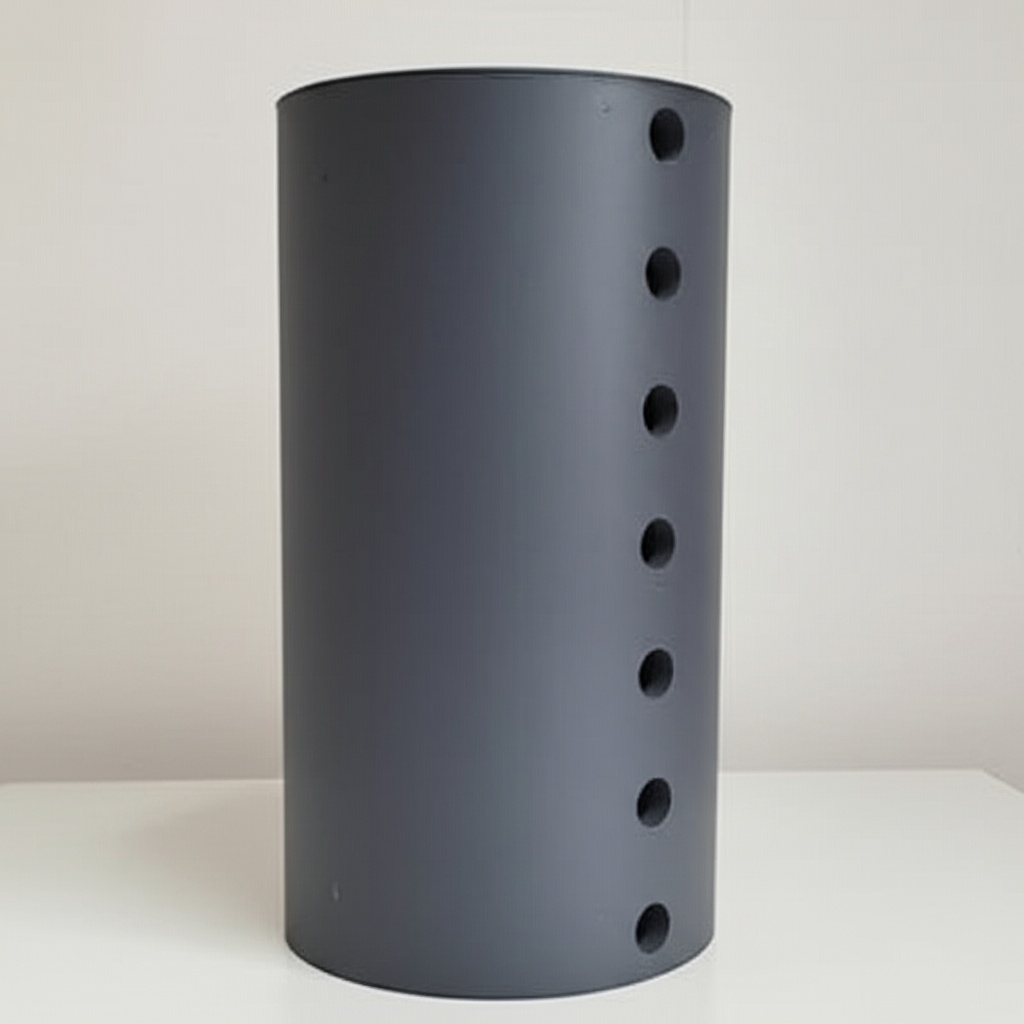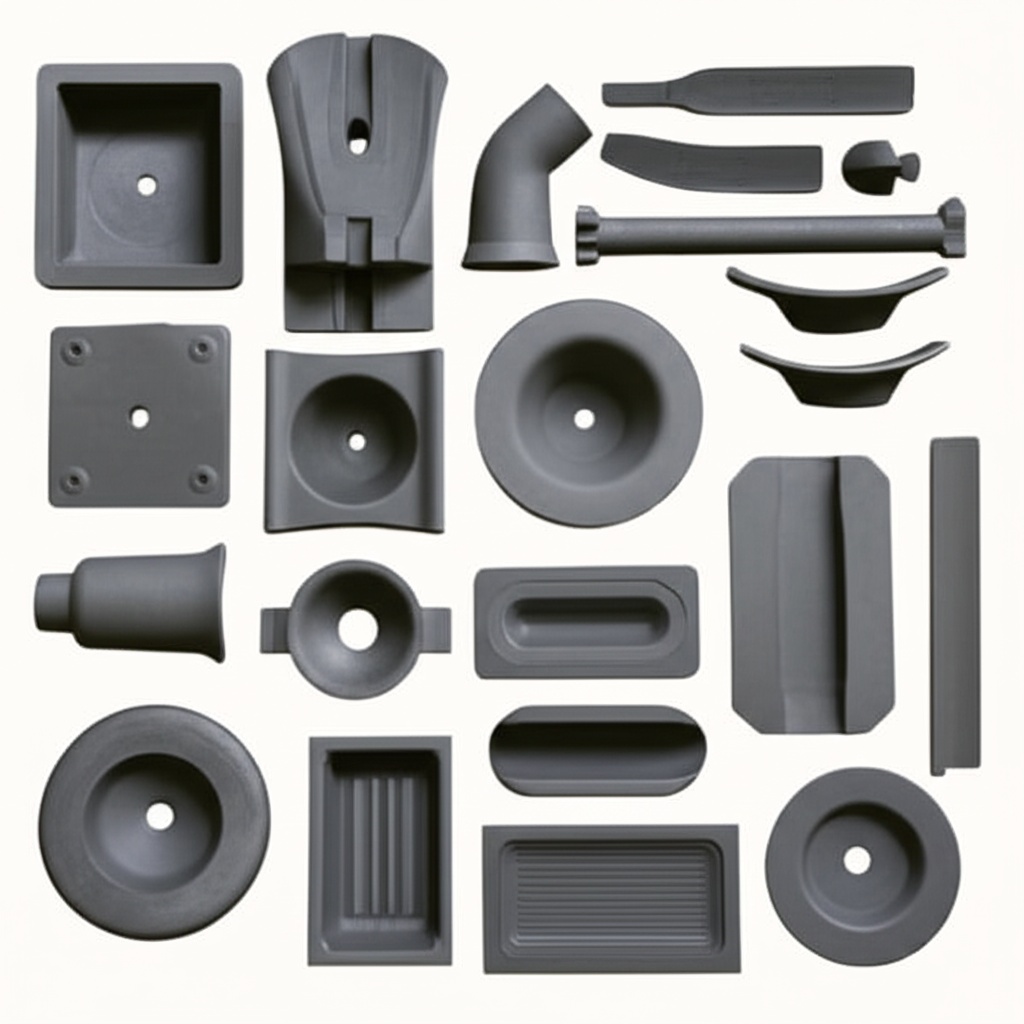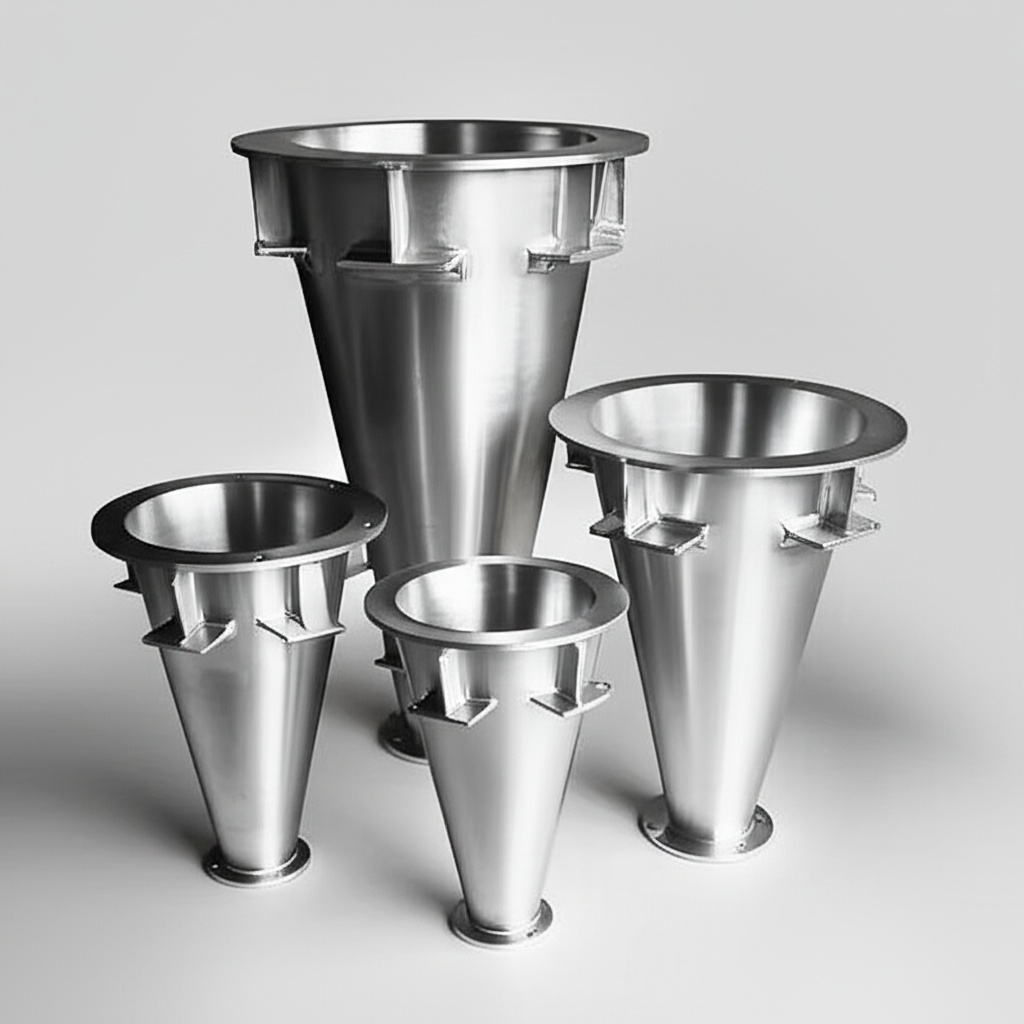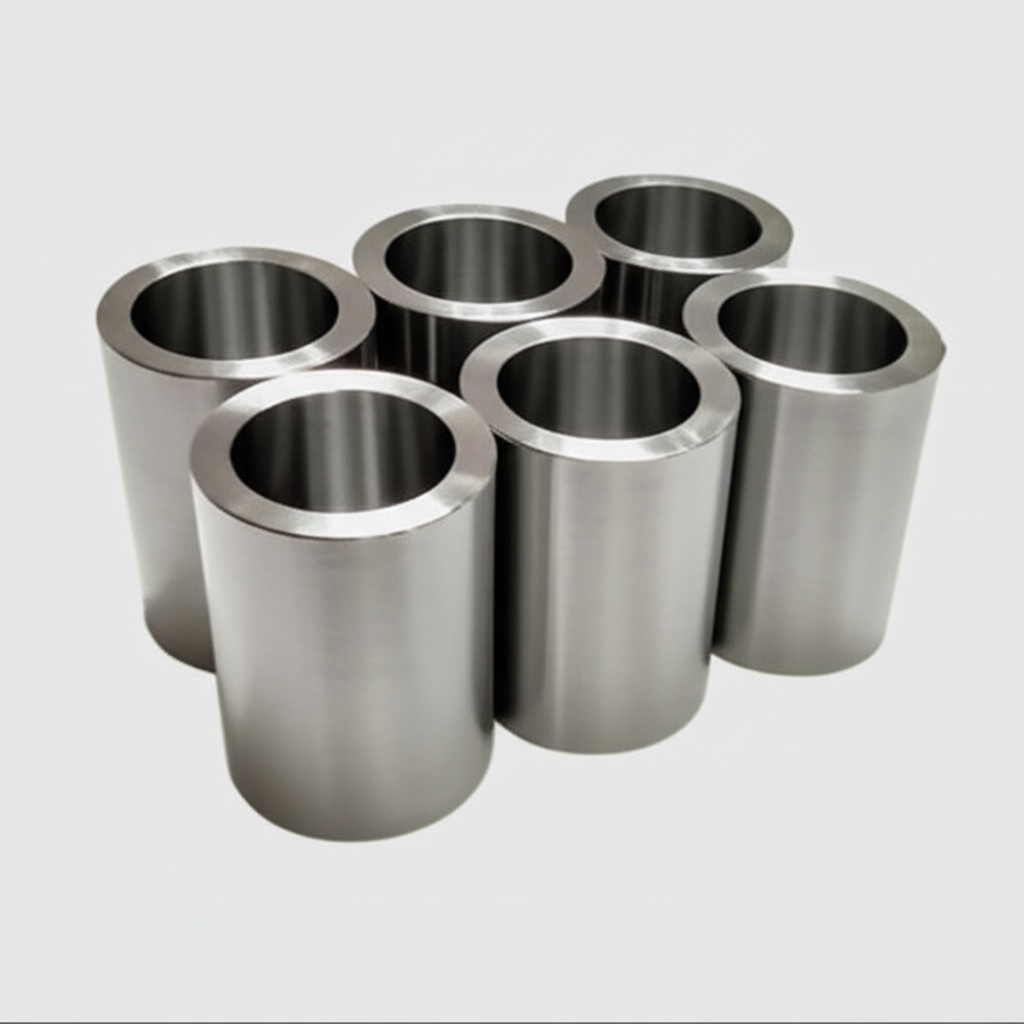Top SiC Machining Equipment for Complex Needs

Share
Top SiC Machining Equipment for Complex Needs
Introduction: The Indispensable Role of Advanced Silicon Carbide Machining Equipment
Silicon Carbide (SiC) has emerged as a critical advanced ceramic material, prized for its exceptional hardness, high thermal conductivity, excellent chemical inertness, and superior performance at extreme temperatures. These properties make SiC components indispensable in a myriad of high-performance industrial applications, from semiconductor manufacturing to aerospace engineering. However, the very characteristics that make SiC so valuable also render it notoriously difficult to machine. Manufacturing complex SiC components with tight tolerances and pristine surface finishes necessitates highly specialized silicon carbide machining equipment. This equipment is not merely an optional upgrade but a fundamental requirement for businesses aiming to leverage the full potential of SiC in demanding environments. As industries push the boundaries of performance and miniaturization, the demand for sophisticated SiC machining solutions capable of handling intricate designs and delivering consistent quality is rapidly accelerating. This blog post will delve into the world of advanced SiC machining equipment, exploring its importance, core technologies, selection criteria, and the evolving landscape of its application.
Why Specialized Equipment is Non-Negotiable for Silicon Carbide Machining
Machining silicon carbide presents a unique set of challenges that standard machining tools and techniques cannot adequately address. Understanding these challenges underscores the necessity for specialized equipment:
- Extreme Hardness: SiC is one of the hardest commercially available ceramic materials, ranking close to diamond on the Mohs scale (around 9-9.5). This extreme hardness leads to rapid tool wear and makes conventional cutting methods inefficient or altogether ineffective. Specialized SiC machining equipment often employs diamond tooling, advanced grinding techniques, or non-contact machining processes like laser ablation or electrical discharge machining (EDM).
- Brittleness: Like many ceramics, SiC is brittle. This means it is prone to chipping, micro-cracking, and catastrophic fracture under improper machining forces or thermal shock. Equipment designed for SiC machining incorporates features to minimize stress concentrations, such as high-speed spindles with minimal runout, precise feed control, and optimized cooling systems.
- High Precision Requirements: Applications for SiC components, particularly in semiconductors and optics, demand exceptionally tight dimensional tolerances and ultra-smooth surface finishes. Specialized equipment offers superior stiffness, vibration damping, and advanced metrology integration to achieve these exacting specifications.
- Thermal Management: Although SiC has high thermal conductivity, localized heat generated during machining can still lead to thermal stresses and damage. Effective cooling and lubrication systems are crucial, often tailored specifically to the SiC machining process.
- Process Efficiency and Cost-Effectiveness: While initial investment in specialized equipment can be higher, it leads to improved yields, reduced scrap rates, longer tool life (when using appropriate diamond tools), and faster cycle times, ultimately making the machining of SiC components more cost-effective in the long run for OEMs and technical procurement professionals.
Investing in dedicated SiC fabrication equipment ensures that manufacturers can consistently produce high-quality components, meet stringent customer requirements, and maintain a competitive edge in the advanced materials sector.
Key Industries Driving Demand for Precision SiC Machining Equipment
The unique properties of silicon carbide make it indispensable in numerous cutting-edge industries. Consequently, these sectors are primary drivers for the development and adoption of advanced SiC machining equipment. The ability to fabricate complex and precise SiC components is crucial for innovation and performance in these fields:
| Industry | Key SiC Component Applications | Why Specialized Machining Equipment is Critical |
|---|---|---|
| Semiconductors | Wafer handling components (chucks, rings, pins), CMP rings, processing chamber components, heat spreaders | Ultra-high purity, extreme precision, minimal particle generation, resistance to plasma and harsh chemicals. Equipment must deliver sub-micron accuracy and superior surface finishes. |
| Automotive (especially EVs) | Power electronic modules (inverters, converters), brake discs, wear-resistant components | High thermal conductivity for heat dissipation in power electronics, lightweight and durable brake systems. Equipment needs to handle complex geometries and ensure reliability. |
| Aerospace & Defense | Mirror substrates for telescopes, rocket nozzles, armor, high-temperature sensor components, turbine engine parts | Lightweight, high stiffness, thermal stability, wear resistance at extreme temperatures. Machining equipment must produce intricate shapes with exceptional dimensional stability. |
| Power Electronics | Substrates for high-power devices, heat sinks, insulators, components for high-voltage switchgear | High breakdown voltage, excellent thermal conductivity, low thermal expansion. Precision machining is vital for component integration and performance. |
| Renewable Energy | Components for solar panel manufacturing (e.g., crucibles), parts for wind turbine power systems | High-temperature stability, chemical resistance, wear resistance. Equipment must be robust for producing durable components. |
| Metallurgy & High-Temperature Processing | Furnace components (beams, rollers, tubes, nozzles), kiln furniture, crucibles, thermocouple protection tubes | Exceptional strength at high temperatures, thermal shock resistance, chemical inertness. Equipment capable of machining large and robust SiC parts is often required. |
| Chemical Processing | Pump components (seals, bearings, impellers), valve parts, heat exchanger tubes, nozzles | Superior corrosion and erosion resistance against aggressive chemicals. Precision machining ensures leak-tight seals and efficient operation. |
| LED Manufacturing | Susceptors for MOCVD reactors, wafer carriers | High thermal uniformity, purity, and resistance to process gases. Equipment must handle delicate and precise components. |
The relentless pursuit of efficiency, durability, and performance in these industries continues to fuel the need for sophisticated industrial SiC machining solutions.
Core Technologies in Modern SiC Machining Equipment: A Deep Dive
Machining silicon carbide effectively requires leveraging advanced technologies designed to handle its extreme hardness and brittleness. Modern SiC machining equipment integrates several core processes, each suited to different aspects of component fabrication:
-
Diamond Grinding: This is the most common method for machining SiC. It utilizes grinding wheels embedded with diamond particles, the only material significantly harder than SiC.
- Types: Surface grinding, cylindrical grinding (ID/OD), creep-feed grinding, profile grinding.
- Equipment Features: High spindle speeds, rigid machine construction to minimize vibration, precision feed control, advanced coolant delivery systems, and in-process wheel dressing capabilities.
- Applications: Shaping, achieving tight tolerances, producing fine surface finishes on a wide range of SiC components.
-
Lapping and Polishing: These processes are used to achieve exceptionally smooth surface finishes (sub-nanometer Ra) and flatness, critical for optical and semiconductor applications.
- Process: Uses fine abrasive slurries (often diamond-based) between the SiC workpiece and a lapping plate or polishing pad.
- Equipment Features: Precision-controlled pressure and speed, robust plate materials, automated slurry feeding systems, and sometimes in-situ metrology.
- Applications: Wafer chucks, mirrors, optical components, seal faces.
-
Laser Machining: Offers a non-contact method for cutting, drilling, and structuring SiC. Ultrashort pulse lasers (femtosecond or picosecond) are preferred as they minimize heat-affected zones (HAZ) and micro-cracking.
- Advantages: Ability to create complex features, high speed for certain operations, no tool wear.
- Equipment Features: Advanced laser sources, high-precision motion control systems (galvo scanners and stages), sophisticated beam shaping optics, and fume extraction.
- Applications: Micro-hole drilling, scribing, cutting intricate patterns, selective material ablation.
-
Electrical Discharge Machining (EDM): Suitable for conductive grades of SiC (like reaction-bonded SiC with free silicon). EDM uses electrical sparks to erode material.
- Types: Wire EDM, Sinker EDM.
- Advantages: Can create complex internal cavities and sharp corners that are difficult with grinding. No direct mechanical force on the workpiece, reducing the risk of fracture.
- Equipment Features: Precise power supplies, fine electrode materials, dielectric fluid management systems, multi-axis control.
- Applications: Complex shapes, molds, dies, intricate internal features in conductive SiC.
-
Ultrasonic Machining (USM) / Rotary Ultrasonic Machining (RUM): USM involves a tool vibrating at ultrasonic frequencies, driving abrasive particles in a slurry to erode the SiC material. RUM combines ultrasonic vibration with the rotation of a diamond-plated tool.
- Advantages: Effective for brittle materials, can machine both conductive and non-conductive SiC, good for drilling holes and creating complex features. RUM offers higher material removal rates than traditional USM.
- Equipment Features: Ultrasonic spindle/actuator, precision tool holders, abrasive slurry delivery system, robust machine frame.
- Applications: Drilling, milling, threading, and creating complex 3D cavities in various SiC grades.
The choice of machining technology and equipment depends heavily on the specific SiC grade, component geometry, required tolerances, surface finish, and production volume. Often, a combination of these technologies is employed to achieve the desired final product.
Essential Features to Evaluate in High-Performance SiC Machining Equipment
When investing in SiC machining equipment, technical buyers and procurement managers must scrutinize several key features to ensure the machinery meets their demanding application needs. High-performance equipment will offer a blend of precision, robustness, and advanced control:
- Machine Rigidity and Vibration Damping:
- Importance: SiC’s brittleness makes it susceptible to micro-cracking from vibrations. A rigid machine structure (e.g., granite base, cast iron frame) and effective damping systems are crucial for accuracy and surface integrity.
- Look for: High static and dynamic stiffness specifications, FEA-optimized designs.
- Spindle Performance (for grinding/milling):
- Importance: High-speed, high-power spindles with minimal runout are essential for efficient material removal and achieving fine finishes with diamond tooling.
- Look for: Ceramic or hybrid bearings, direct-drive motors, thermal stability control, HSK or other high-precision tool interfaces.
- Precision Motion Control:
- Importance: Achieving sub-micron tolerances requires highly accurate and repeatable axis movements.
- Look for: Linear motor drives, high-resolution encoders (e.g., Heidenhain, Renishaw), precision ball screws, advanced CNC controllers (e.g., Fanuc, Siemens) with specialized algorithms for hard material machining.
- Advanced Cooling and Lubrication Systems:
- Importance: Effective heat dissipation is critical to prevent thermal damage to the SiC workpiece and prolong tool life.
- Look for: High-pressure coolant delivery (through-spindle coolant is a plus), temperature-controlled coolant systems, filtration systems to remove SiC particles, and compatibility with specialized coolants for ceramic machining.
- Tooling and Dressing Systems:
- Importance: Compatibility with appropriate diamond tooling is a must. In-process or automated tool dressing capabilities maintain the sharpness and profile of grinding wheels, ensuring consistent performance.
- Look for: Automatic tool changers (ATC), acoustic emission sensors for dressing monitoring, integrated dressing units.
- Software and Control System Capabilities:
- Importance: User-friendly interfaces, CAM software compatibility, and specialized machining cycles for hard brittle materials can significantly enhance productivity and ease of use.
- Look for: Adaptive control features, options for process monitoring, G-code compatibility, and networking capabilities for Industry 4.0 integration.
- In-Process Metrology and Probing:
- Importance: On-machine measurement capabilities can reduce setup times, allow for adaptive machining, and verify component accuracy without removing it from the machine.
- Look for: Touch probes, laser measurement systems, integrated vision systems.
- Workpiece Clamping and Fixturing:
- Importance: Secure and damage-free clamping of brittle SiC parts is vital. Fixturing should be designed to minimize stress concentrations.
- Look for: Vacuum chucks, specialized ceramic clamping systems, customizable fixturing options.
- Safety and Environmental Considerations:
- Importance: Machining SiC can generate fine dust. Effective enclosure and extraction systems are necessary.
- Look for: Fully enclosed machining areas, efficient dust collection/mist extraction systems, compliance with safety standards.
A thorough evaluation of these features against specific production requirements will guide buyers toward the most suitable and cost-effective precision SiC machining equipment.
Optimizing SiC Component Design for Efficient Machining: Engineering Insights
While advanced SiC machining equipment is crucial, the design of the SiC component itself plays a significant role in the efficiency, cost, and success of the machining process. Engineers designing SiC parts should consider manufacturability from the outset. Here are key engineering insights for optimizing SiC component design for machining:
- Simplify Geometries Where Possible:
- Complex, intricate shapes significantly increase machining time and cost. Evaluate if all complex features are strictly necessary for the component’s function.
- Favor prismatic shapes, simple curves, and fewer pockets or cavities if performance allows.
- Specify Generous Radii for Internal Corners:
- Sharp internal corners are difficult and time-consuming to machine, often requiring specialized tooling or EDM. They also act as stress concentrators in brittle materials like SiC.
- Design with the largest possible internal radii that the function permits. This allows for the use of larger, more robust grinding tools, reducing machining time and tool wear.
- Avoid Thin Walls and Delicate Features (Unless Essential):
- SiC’s brittleness makes thin walls (generally less than 1-2mm, depending on overall size and grade) prone to chipping or fracture during machining and handling.
- If thin walls are unavoidable, discuss design feasibility with the machining experts early. Consider support structures or alternative manufacturing routes if machining proves too risky.
- Standardize Hole Sizes and Depths:
- Reduces the number of tool changes required.
- Through-holes are generally easier to machine than blind holes, as chip removal is more effective. For blind holes, allow for a reasonable bottom clearance.
- Consider Machining Access:
- Ensure that all features requiring machining are accessible to the cutting tools. Deep, narrow cavities or undercut features can be extremely challenging or impossible with conventional grinding.
- Discuss complex access requirements with your SiC customization support team to explore options like multi-axis machining or alternative processes.
- Specify Tolerances and Surface Finishes Realistically:
- Tighter tolerances and finer surface finishes drastically increase machining time and cost. Only specify what is functionally necessary.
- Understand the capabilities of the intended SiC machining processes and equipment. For instance, grinding can achieve tight tolerances, while lapping/polishing is needed for super-fine finishes.
- Choose the Right SiC Grade for the Application AND Machinability:
- Different SiC grades (e.g., sintered, reaction-bonded, CVD SiC) have varying machinability characteristics due to differences in density, grain size, and presence of secondary phases (like free silicon in RBSC).
- Consult with material and machining experts to select a grade that balances performance requirements with manufacturability.
- Design for Secure Fixturing:
- Provide adequate, stable surfaces for clamping the workpiece during machining. Avoid features that could interfere with proper fixturing or create stress points when clamped.
- Communicate Early with Machining Providers:
- Engage with experienced SiC machining providers during the design phase. They can offer invaluable feedback on design for manufacturability (DFM), potentially saving significant time and cost later.
By incorporating these design considerations, engineers can significantly improve the machinability of SiC components, leading to lower manufacturing costs, shorter lead times, and higher yields, even when using the most sophisticated SiC fabrication equipment.
Achieving Ultra-High Tolerances and Superior Surface Finishes with Advanced SiC Equipment
The demand for ultra-high precision and impeccable surface quality in silicon carbide components is a hallmark of industries like semiconductors, optics, and aerospace. Advanced SiC machining equipment is specifically engineered to meet these stringent requirements. Understanding what is achievable and the factors influencing these outcomes is crucial for both designers and manufacturers.
Achievable Tolerances:
- Dimensional Tolerances: With state-of-the-art grinding equipment, dimensional tolerances in the range of $pm1 mu m$ to $pm10 mu m$ ($pm0.00004″$ to $pm0.0004″$) are often achievable, depending on the component size, geometry, SiC grade, and process stability. For highly specialized applications, even tighter tolerances may be possible with optimized processes and metrology.
- Geometric Tolerances:
- Flatness/Straightness: Can reach levels of $1 mu m$ over significant lengths/areas, with lapping and polishing achieving even better results (e.g., $lambda/10$ or better for optical surfaces).
- Parallelism/Perpendicularity: Typically achievable within a few micrometers, crucial for mating parts and assemblies.
- Roundness/Cylindricity: Precision grinding can achieve roundness values below $1 mu m$.
Superior Surface Finishes:
- Grinding: Standard precision grinding can produce surface roughness (Ra) values in the range of $0.1 mu m$ to $0.8 mu m$. Fine grinding techniques can achieve Ra values down to $0.05 mu m$ or better.
- Lapping: This process significantly improves surface finish, typically achieving Ra values from $0.02 mu m$ to $0.1 mu m$. It’s excellent for achieving high flatness and parallelism.
- Polishing (e.g., Chemo-Mechanical Polishing – CMP): For applications demanding the smoothest surfaces, such as semiconductor wafers, optical mirrors, or high-performance seals, polishing techniques can achieve Ra values well below $0.005 mu m$ (5 nanometers), sometimes even reaching atomic-level smoothness.
Factors Influencing Precision and Finish with Advanced Equipment:
- Machine Tool Quality: The inherent stiffness, thermal stability, accuracy of motion systems (linear motors, encoders), and spindle quality of the SiC machining equipment are paramount.
- Tooling: Diamond grit size, concentration, bond material, and wheel geometry directly impact material removal rate, achievable finish, and form accuracy. Proper tool selection and conditioning (dressing) are vital.
- Process Parameters: Cutting speeds, feed rates, depth of cut, coolant type and delivery – all must be meticulously optimized for SiC. Advanced equipment allows for fine control over these parameters.
- SiC Material Grade: Grain size, porosity, and presence of secondary phases in the SiC material can affect the machined surface and achievable tolerances. Finer-grained, denser SiC generally allows for better finishes.
- Workpiece Clamping: Stable, stress-free fixturing is essential to prevent distortion or movement during machining.
- Environmental Control: Temperature fluctuations in the machining environment can affect machine accuracy. Temperature-controlled facilities and coolant systems are beneficial.
- Metrology and Feedback: Integrated or near-line metrology provides crucial feedback for process control and quality assurance, enabling adjustments to maintain high precision.
Investing in top-tier SiC grinding machines, lapping/polishing units, and other specialized systems, combined with robust process engineering, empowers manufacturers to consistently deliver components that meet the most demanding specifications for tolerance and surface integrity.
Navigating Common Challenges in SiC Machining: The Equipment Solution
Despite its desirable properties, silicon carbide presents significant machining challenges. Advanced SiC machining equipment is specifically designed with features and capabilities to address and mitigate these difficulties, enabling efficient and high-quality component production.
1. Material Brittleness & Chipping:
- Challenge: SiC is prone to brittle fracture, leading to edge chipping, micro-cracks, and subsurface damage if machined with excessive force or improper techniques.
- Equipment Solution:
- High Machine Stiffness & Damping: Minimizes vibrations that can induce cracks.
- Precise Feed Control & Low Force Machining: CNC controllers with advanced algorithms allow for gentle material removal, especially during entry and exit of the tool.
- High-Speed Spindles with Minimal Runout: Reduces impact forces and ensures smoother cutting action.
- Optimized Tooling: Use of fine-grit diamond tools and specific tool geometries designed for brittle materials.
- Peck Drilling/Grinding Cycles: For hole-making, these cycles reduce stress build-up.
- Laser Machining (Ultrashort Pulse): Minimizes thermal stress and mechanical impact, reducing cracking.
2. Rapid Tool Wear:
- Challenge: The extreme hardness of SiC causes rapid wear of conventional cutting tools. Even diamond tools experience wear.
- Equipment Solution:
- Robust Spindles & Tool Holders: Ensure stability and rigidity to maximize the effectiveness of diamond tools.
- In-Process/Automated Tool Dressing Systems: For grinding wheels, these systems regularly re-sharpen the wheel and maintain its profile, ensuring consistent cutting and prolonging wheel life.
- Adaptive Control Systems: Some advanced equipment can monitor cutting forces or acoustic emissions and adjust machining parameters to optimize tool life.
- High-Pressure Coolant Systems: Efficiently flushes away SiC particles that can cause abrasive wear on the tool and aids in lubrication.
- Support for Advanced Tool Materials: Equipment should be compatible with the latest generations of diamond tools and potentially alternative abrasive technologies.
3. Thermal Management & Thermal Shock:
- Challenge: Although SiC has high thermal conductivity, localized heating during aggressive machining can cause thermal stresses, potentially leading to cracks or surface damage. Sudden temperature changes can also cause thermal shock.
- Equipment Solution:
- Advanced Coolant Delivery: High-pressure, precisely directed coolant (often through-spindle) effectively removes heat from the cutting zone.
- Temperature-Controlled Coolant Systems: Maintain coolant at a stable temperature to prevent thermal shock to the workpiece.
- Chilled Spindles and Machine Components: Help maintain thermal stability of the entire machining system.
- Laser Machining with Ultrashort Pulses: “Cold ablation” process significantly reduces heat input into the material.
- Optimized Process Parameters: Reducing depth of cut and feed rate can lower heat generation, though this may impact cycle time.
4. Difficulty in Achieving Complex Geometries:
- Challenge: Creating intricate shapes, internal cavities, or sharp corners in SiC using traditional methods is challenging due to its hardness and brittleness.
- Equipment Solution:
- Multi-Axis Machining Centers (5-Axis): Allow for complex tool paths and orientations, enabling the machining of intricate geometries in a single setup, reducing errors from multiple setups.
- EDM (Electrical Discharge Machining): For conductive SiC grades, EDM can produce complex internal shapes and sharp corners not achievable by grinding.
- Laser Machining: Highly flexible for cutting, drilling, and micro-structuring complex patterns.
- Ultrasonic Machining (USM/RUM): Effective for creating complex 3D cavities and features in both conductive and non-conductive SiC.
- Advanced CAM Software Integration: Sophisticated software allows for precise tool path generation for complex surfaces.
5. Dust and Swarf Management:
- Challenge: Machining SiC generates fine, abrasive dust (swarf) that can be a health hazar

About the Author: Sicarb Tech
We provide clear and reliable insights into silicon carbide materials, component manufacturing, application technologies, and global market trends. Our content reflects industry expertise, practical experience, and a commitment to helping readers understand the evolving SiC landscape.




